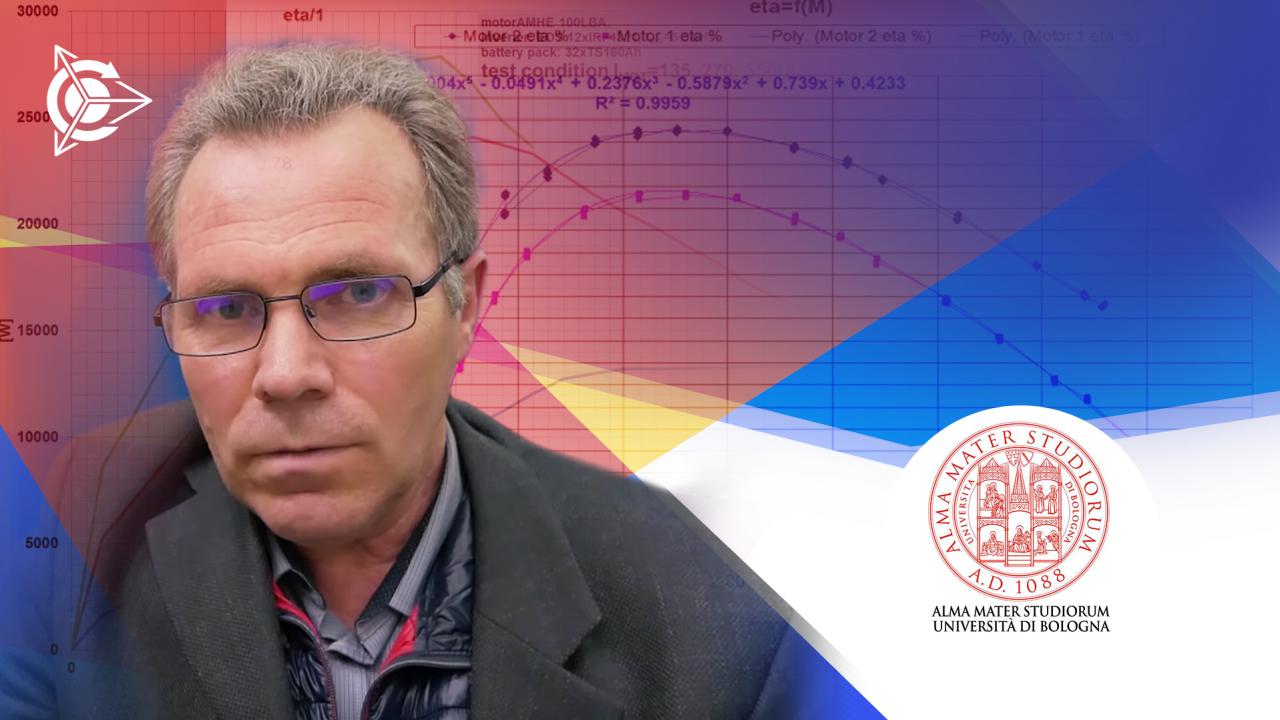
Victor Arestov: testing "Slavyanka" in the University of Bologna
Victor Arestov told about testing the "Slavyanka" modernized motor conducted in the University of Bologna in September, 2013.
Choosing the University of Bologna is determined by Victor's partnership with the partners from Monaco at that time.
Victor's goal was making a motor for an electric buggy based on the "Slavyanka" technology and conducting comparative testing with the electric buggy motor developed in the University of Bologna. The standard motor made specially for the buggy had the weight of 54 kg and a copper rotor.
For testing the "Slavyanka" technology, a 4-pole AEG motor was chosen in size 100, 3 kW, with 86% efficiency and energy efficiency class IE2. The regular general purpose industrial motor had the weight of 27 kg and an aluminium rotor.
According to Victor's estimates, these parameters were enough to provide the required power of 11-12 kilowatt and the torque of over 100 Nm.
The goal of testing was to demonstrate not only the power specifications of the "Slavyanka" motor but saving of electrical energy consumption too.
For the tests, the controller developed in the University was used which perfectly synchronized with the motor modernized using Duyunov's technology.
The testing was held in three different modes:
• Rated 135 A
• 270 A
• 350 A
The results: the modified motor showed the lack of 1 kW in rated power and 1 kW in maximum power. The previous electric buggy motor provided the power of 20 kW at 350 Ampere, the general purpose industrial motor – 19 kW.
There was the difference in the efficiency too: electric buggy motor - 91%, modified general purpose industrial motor based on the "Slavyanka" technology – 89%.
As Arestov says, the choice of the motor for testing wasn't exactly right. To achieve the planned results, they should have chosen not size 100, but size 112 motor with the bigger power of 4 kW.
However, it should be taken into consideration that the difference in the weight of the motors was almost two times and the special electric buggy motor had a copper rotor while the modified motor had an aluminium rotor (the efficiency can be increased by 2-3% by changing an aluminium rotor to a copper rotor).
Yet the modified 27 kg motor showed almost the same parameters as the specially developed original 54 kg motor!
You can find the testing protocols here - https://clck.ru/GQgTM
Victor admits that this test was important not only for the University of Bologna, but for him personally. He was just starting to get acquainted with the technology back then and wanted to prove its efficiency once again. It was this Bologna testing that encouraged him to work more vigorously on the technology.
It became absolutely clear that if the technology showed such adequate results applied to a general purpose industrial motor with a dubious quality rotor, then developing specialized motors in good hardware in a laboratory setting could demonstrate excellent results!
Arestov points out that even back then 6 years ago he was impressed by the equipment and computing of the laboratory.
For the record, today the project laboratory in Zelenograd is equipped with even more up-to-date and high-quality facilities.

